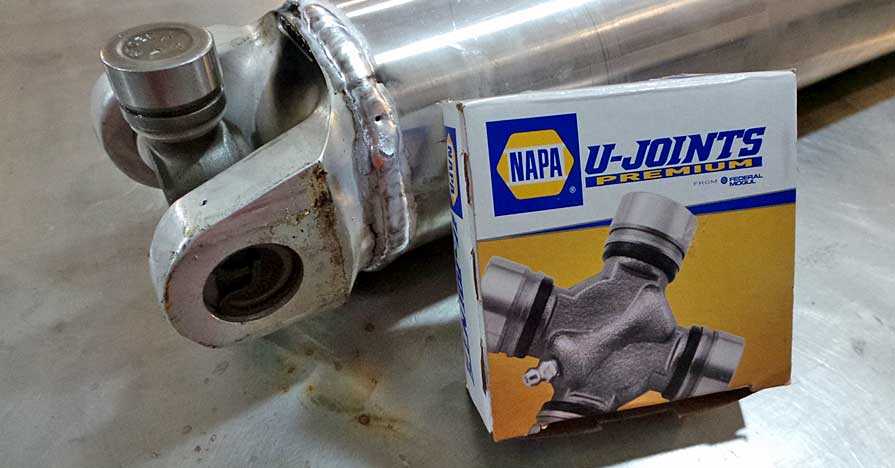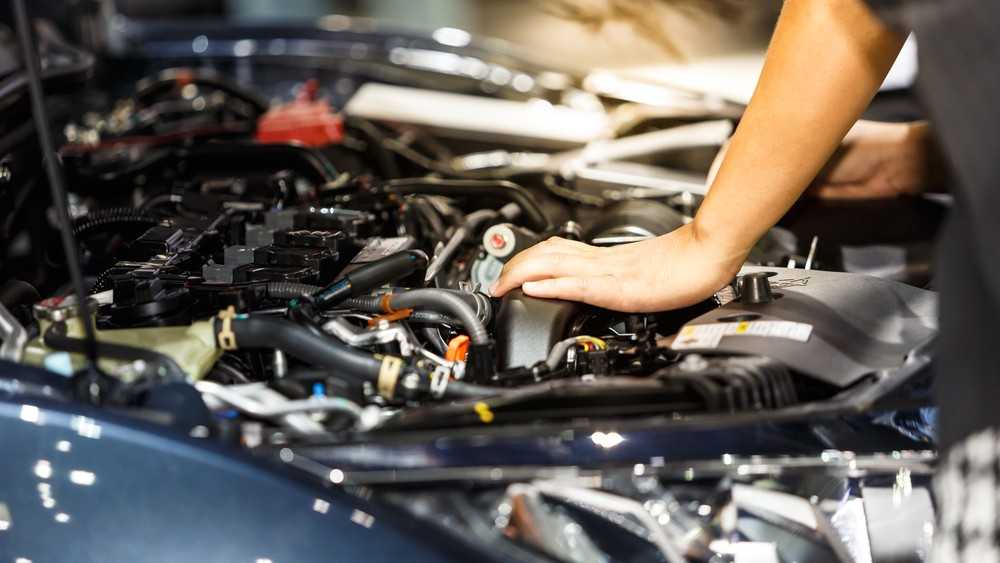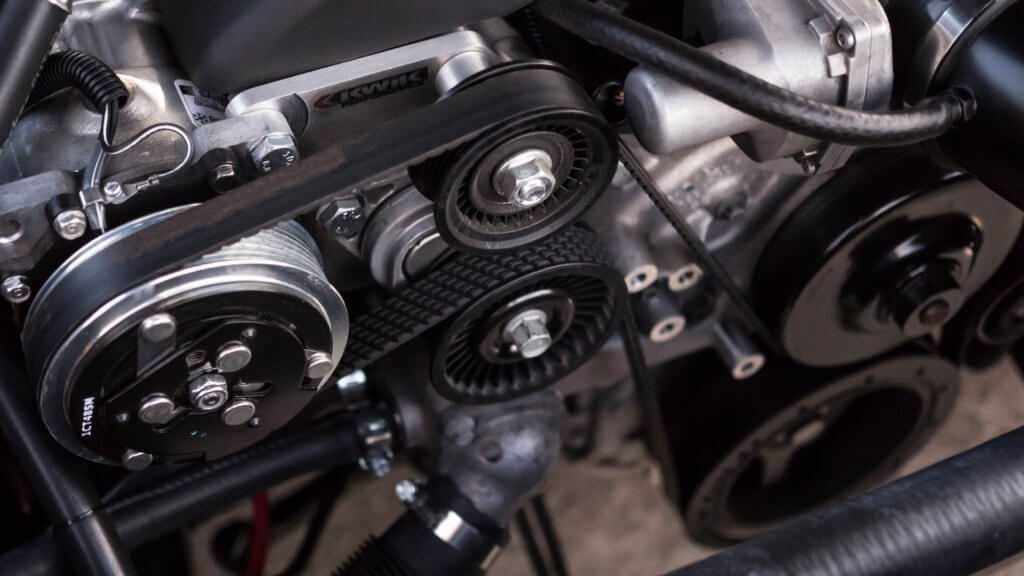Without a universal joint (or U-joint), you won’t be able to drive a vehicle. To make sure of the good health of your car and your safety on the road, you should be able to pick up the signs of bad universal joint.
Contents
What Is a Universal Joint?
The U-joint is a driveshaft component that is found in rear-wheel-drive trucks, four-wheel SUVs and drive trucks, and off-road vehicles.
This component transfers power from the transmission to the differential and makes up for the height misalignment between the transmission and the rear axle. Found in pairs on the driveshaft assembly, you cannot drive a vehicle without functioning U-joints.
Each end of the driveshaft is linked to a U-joint. With each rotation of the driveshaft, the joints bend to correct the misalignment. Rear-wheel-drive cars these days use constant-velocity joints instead of the U-joints for smoother drive shaft rotations. In automobiles, there are two universal joints placed along the drive line. Car owners can locate them at the engine as well as the rear differential in rear-wheel drive cars. In some 4WD automobiles, there are more U-joint connections along the drive line than in other vehicles.
Signs of Bad Universal Joint: Cues to Look for
There will be some symptoms of failing universal joints. Picking up these warning signs of a bad U joint is likely to save your car from being towed to a repair shop.
Squeaking noises
Does your car squeak when it starts moving after kicking off the engine? It becomes noticeable when the car moves forward or goes into reverse but goes away when the vehicle speeds up to over 5 to 10 mph.

Why does this happen? The universal joints have bearing components that are greased at the factory. Now, this greasing can be used up or evaporated over time. Each rotation of the driveshaft makes the bearings twist a little. So, dry bearings cause metal-to-metal contact, and excessive friction leads to squeaking noises and corrosion.
The screeches are a reminder to have a professional mechanic diagnosing and servicing the universal joints. Timely servicing will extend the lifespan of the joints and save the driveshaft from breaking down.
A clunking sound
Clunks are signs of bad universal joint, especially when you hear them when shifting the vehicle from ‘Drive’ to ‘Reverse’.
The clunking sound means the bearings allow the driveshaft to rotate a little before stopping hard when the power is reversed. This can simply be the next stage of producing squeaks due to insufficient grease amount in the bearings. Some damage has already been done at this stage that you cannot undo but servicing will definitely slow the ruination down.
Vibrations while speeding up
The next phase of clunky bearings is a strong vibration felt throughout when you accelerate the vehicle. This results from the imbalanced movement of the driveshaft.
When the grease dries up and the bearings are worn enough to not be able to control the driveshaft’s movement. Its deviation from its regular rotational route causes that vibration.
Are you familiar with the vibrations caused by imbalanced wheels The frequency of this vibration will be more intense because a driveshaft rotates at least three times quicker than the wheels.
This symptom means that the U-joints have started affecting other components, including the transmission. A diagnosis and repair job is necessary at this period if you want to prevent further damage.
See more
Transmission fluid leaking
This fluid leaks for many reasons and bad U-joints are one of them. You can be sure about it when the leakage occurs in the rear of the transmission.
If you ignore the vibrations, unstable drive shaft rotations are likely to wear out the transmission tail shaft bushing and output shaft seal, causing the leaking of the fluid.
When this happens, thoroughly examine the transmission to find out the source of the leak and take repair actions.
The car does not move
This is the last step of U-joint failure. You may have already seen a vehicle stationed on the side of a road with its driveshaft lying underneath. It means that the driveshaft literally breaks down and disjoints from the rear axle or transmission. Repairing at this point may require the replacement of the driveshaft and even more.
Disconnected drive shaft
In some other cases, the U Joint has completely gone bad and it cannot connect the drive shaft. To be more specific, the drive shaft fell off the car and disconnected. In this situation, car owners need to call a tow truck in order to replace a new drive shaft.

Causes of Universal Joint
Universal Joint is usually worn and torn, just like every other car component. However, the drive shaft angle or speed is damaged mostly by extreme vehicle use most of the time. Other reasons are short of lubrication of the bearings, as well as vehicle modifications. As usual, if car owners can identify the cause of faulty Universal Joints, they can easily avoid the issues, along with selecting a suitable replacement. In this article, we will list out a few of the most common causes of bad universal joints:
Heavy duty
One of the most common causes of Universal Joint is the hazard duty task. Machines are just like humans, they have limitations. If car owners force their vehicles to perform heavy tasks such as off-roading, and racing, they will be damaged quite easily. This also affects car components. Drive shaft and U Joint, for example.
If the vehicles must perform heavy-duty tasks regularly, the owners can consider replacing normal U joints with heavy duty U joints. The reason for this is that these car parts are designed for tougher activities.
Wear and tear
Even though having a super long lifespan, U joints can still wear out with hard driving, long-distance driving, as well as adverse driving conditions. This usually happens with SUVs and trucks, since they mainly drive off-road, towing or hauling. As a result, the U joints are more likely to wear and tear, which need a replacement much faster than a normal driver.
Grease lose
Last but not least, the lack of lubrication is the cause of most bad U joints. Car owners need to take care of their U joints, and proper chassis grease is one of them.
How Long Can You Drive with a Bad U Joint?
When the U-joints completely fail, you are left with no other option than towing the car to a mechanic. To avoid this, you should pick up the signs of bad universal joint discussed above.
Normally, the U-joints last the lifetime of a vehicle. But anything in your car can break down any time, so the joints may also need replacement.
If they are not running properly, you will need to replace them as soon as possible. Also, remember to replace them in pairs to avoid more trouble in the future. If you need to drive for a while with bad U-joints, do it without running on 4WD. Using 4WD can make the shafts explode or rip apart.
The safest option for you and the vehicle is to seek professional help when you start noticing the symptoms of failing U-joints.
How to diagnose and replace the universal joints:
Conclusion
As stated before, U Joints are much less expensive than transmission work or a new drive shaft so inspecting or changing them at the first sign of trouble is the best idea. Some factors can accelerate wear and cause premature failure so selecting the right U Joint to mitigate those factors can mean better operation overall and less of a chance they will need to be replaced.
Moog offers several replacement options, manufactured at standards above the originals, so we suggest trying them out if you’re needing to replace the U Joints on your vehicle.



